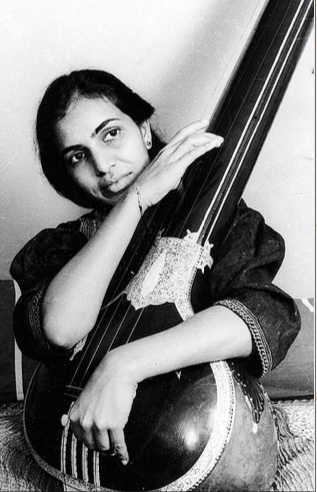By Yatrika Shah-Rais
Even the fussiest music critics would have to love singer Shweta Jhaveri. Who would dare find fault with such an obvious talent? The question that time will have to answer is: Will Shweta Jhaveri, already an exemplary master of several classical Hindustani musical styles, go down in history as a stalwart guard of established tradition? Or will she bring something slightly or even radically new to the field of music, be it Eastern, Western or its fusion in between? Current indications are that she is willing to tread wisely and cautiously into the no-man’s-land of, well, it really has not been definitively named yet “High-Class East-West Fusion?” “World Music” is probably the best current classification for her innovative work. This relatively new category defines music which aspires to synthesize different traditions from around the world.
With nine recordings to her credit, including the soundtrack for the movie “Dance of the Wind,” Jhaveri has just released Anahita which features her compositions and her voice to the accompaniment of tambura, autoharp, violin, guitar, bass and Western percussion. Although all of the instrumentalists on the CD are fine, highly trained Western professionals, the music they are playing is composed by Jhaveri in traditional North Indian ragams and talams (melodies and rhythms). More importantly, Jhaveri is not diluting the Eastern side of this musical equation. Her compositions are purely classical in form. Such strict adherence to established method has not been the usual approach in other modern-day “fusion” experiments that have typically set far fewer rules.
Jhaveri specializes in the classical Hindustani style of music called khayal, which literally means “imagination.” Khayal features improvisation and is a demanding, well-established musical tradition. “I was introduced to khayal when I was seven years old,” she says in an interview with Hinduism Today. “I really love it because of the openness that it provides compared to other styles.”
Jhaveri likes the concept of merging khayal and jazz, but admits there are limitations. “I am always looking for something different,” Jhaveri says. “As much as I enjoy performing Indian classical music, I also like nontraditional music and experimenting with other musicians. It is a progressive step. Jazz and Indian music have similarities. Jazz is very open. My love of jazz comes from my training in khayal and its emphasis on improvisation. Sometimes “fusion” does not work. For me, it can only really be successful when two different styles are connected through a common concept.”
Concerning the current evolution of Hindustani classical music, Jhaveri feels that even the best performers are mostly concerned with maintaining the tradition without introducing innovation. This is good, she says, for such tradition should evolve slowly, and then only from within itself under the expert leadership of those who have mastered that tradition. “To bring something new,” she says, “you have to know what was there before.”
Jhaveri comes from Ahmedabad in the state of Gujarat. As she was growing up, her family encouraged her musical studies. At the age of six, she began her formal voice training with the famous Pandit Vilas Khandekar. At nine, she gave her first public performance. She received a BA in English Literature from St. Xavier’s college in Ahmedabad and a Masters degree in Music Composition from Ghandarva University in New Delhi. Even while in college, she was performing throughout India.
Some time after Pandit Vilas Khandekar passed away in 1993, Jhaveri began studying with master vocalist Pandit Jasraj. She also traveled with him as his accompanist both in India and abroad. This brought her some degree of fame and helped establish her as an international performer.
Jhaveri also feels indebted to master sarod performer Ustad Ali Akbar Khan, whom she counts as one of her mentors. Although she did not study with him, he helped open doors for her to perform and teach.
Through her music, Jhaveri feels that she can have a positive but limited effect on Indian youth. “Youngsters don’t listen to one kind of music,” she says. “There have been efforts to make classical Indian music more popular, but youth mostly listen to pop. If I can present khayals in a more contemporary way, I might be able to spark their interest. But this does not mean they will suddenly go listen to the more traditional classical music.”
Jhaveri sees music and religion in close relationship. “Our music comes from the Vedas and the Upanishads,” she says. “That connects it to Hinduism. Much of the classical repertoire consists of prayers and invocations. This is true even in the semi-classical forms. The work itself becomes a spiritual practice. Music is truly my devotion; it is like religion for me.”
Now in her mid thirties, Jhaveri splits her time between India and the US. She has a home in the Bay Area and maintains a busy schedule, composing, recording, performing and teaching.
According to the lyrics of a song yet to be written: “History is holding a place for Shweta. She’s stepped upon the stage. How will she change the map of music? Time will tell with age.” Stay tuned atwww.shwetajhaveri.com. [http://www.shwetajhaveri.com]


